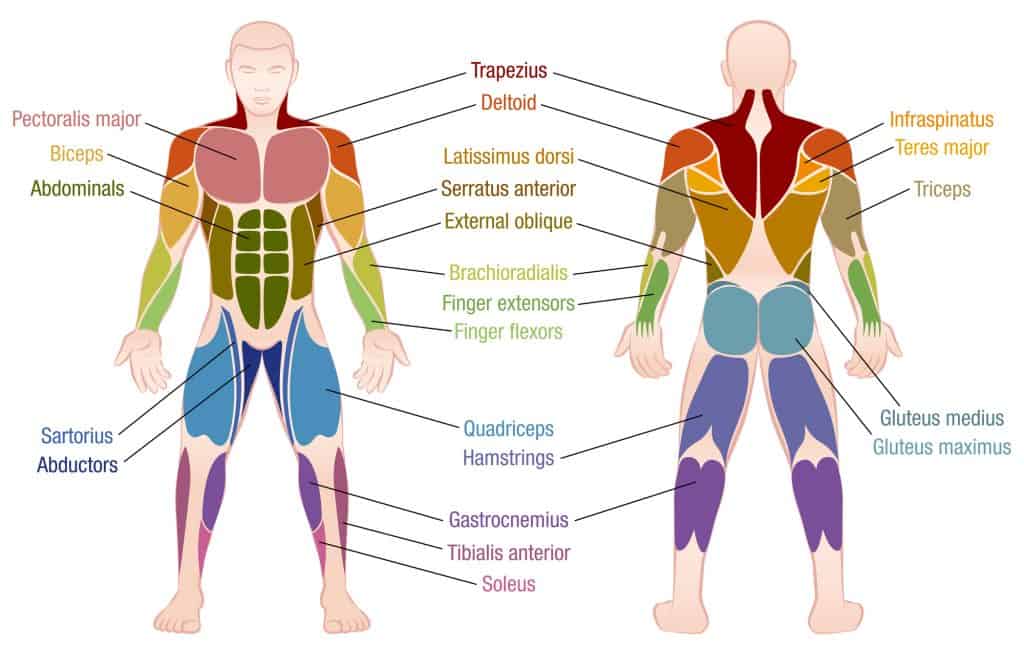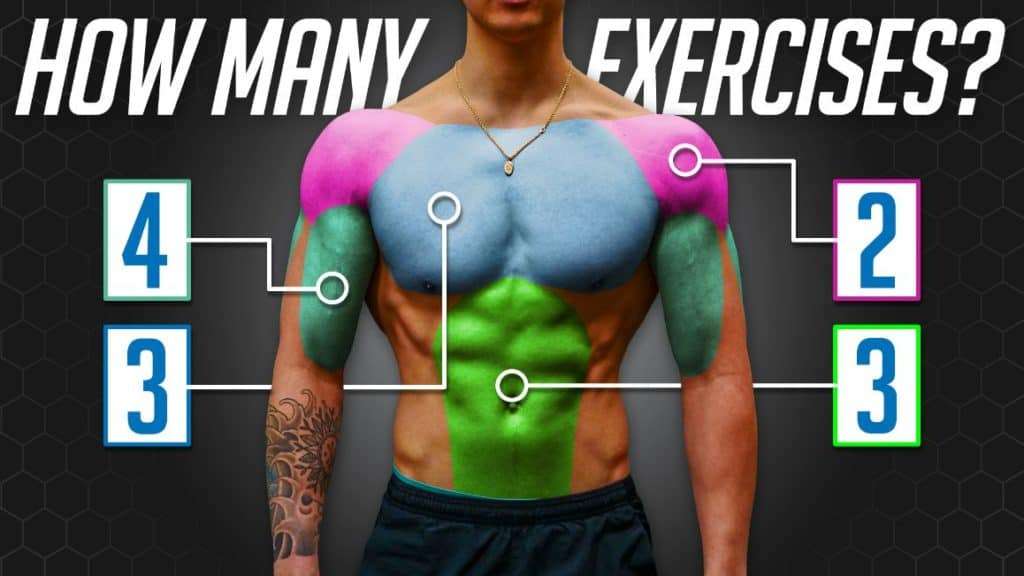When it comes to designing your workout routine, one important question often arises: how many muscle groups should you target in a single session? Finding the right balance is key to achieving your fitness goals effectively. While some argue that focusing on multiple muscle groups in one workout can maximize efficiency, others believe that targeting one or two muscle groups at a time allows for more focused and intense training. This article will explore both approaches, providing insights and considerations to help you determine the optimal number of muscle groups to target in your workouts.
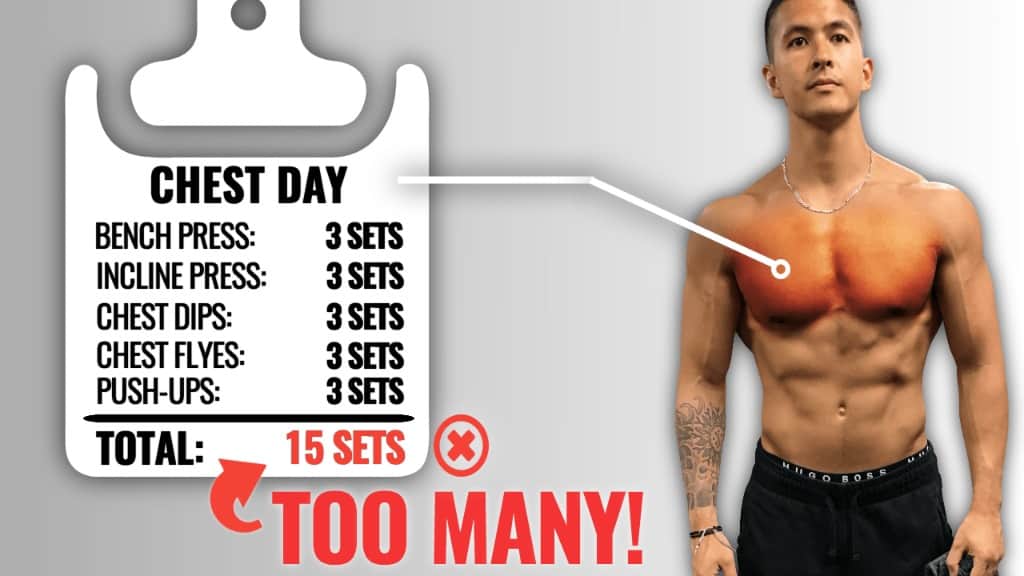
Benefits of targeting multiple muscle groups
Efficiency in time management
When you target multiple muscle groups in a single workout, you can efficiently manage your time. Rather than dedicating separate days for different muscle groups, you can hit several areas of your body all at once. This means you can complete a well-rounded workout in a shorter amount of time, which is especially beneficial for those with busy schedules. By targeting multiple muscle groups, you can make the most out of your workout sessions and maximize your time spent at the gym.
Increased calorie burn
Targeting multiple muscle groups during a workout also leads to increased calorie burn. When you engage multiple muscles simultaneously, you are exerting more energy, resulting in a higher caloric expenditure. This can be particularly advantageous for individuals looking to lose weight or maintain a healthy body composition. By incorporating exercises that work different muscle groups into your routine, you can boost your calorie burn and enhance your overall fitness goals.
Improved overall strength
Another major benefit of targeting multiple muscle groups is the improvement in overall strength. When you incorporate compound exercises that engage multiple muscles, you are not only building strength in specific muscle groups but also enhancing your overall functional strength. Compound exercises, such as squats and deadlifts, require coordination and strength from various muscle groups. By regularly performing these types of exercises, you can develop a strong and balanced physique.
Balanced muscle development
In addition to improving overall strength, targeting multiple muscle groups promotes balanced muscle development. Many people focus solely on specific muscle groups, neglecting others. This can result in muscle imbalances, which may increase the risk of injury and hinder overall athletic performance. By incorporating exercises that target different muscle groups, you can ensure that all areas of your body are being worked evenly. This promotes symmetry and helps create a well-proportioned physique.
Factors to consider
Training experience and fitness level
It’s essential to consider your training experience and fitness level when deciding how many muscle groups to target in a single workout. If you are a beginner, it may be more beneficial to start with targeting fewer muscle groups to allow your body to adapt and avoid overexertion. As you gain experience and improve your fitness level, you can gradually increase the number of muscle groups you target in each workout.
Workout frequency and duration
Your workout frequency and duration also play a role in determining how many muscle groups to target. If you are someone who exercises frequently and has longer workout sessions, you may have the capacity to target more muscle groups. On the other hand, if you have limited time for workouts or prefer shorter, more intense sessions, targeting fewer muscle groups may be more appropriate.
Specific goals and priorities
Consider your specific goals and priorities when determining how many muscle groups to target. If your primary goal is to build muscle mass in specific areas, you may choose to dedicate individual workouts to those muscle groups. Alternatively, if overall strength and functionality are your main objectives, targeting multiple muscle groups in a single workout would be more beneficial.
Recovery ability
Your recovery ability is an important factor to consider when targeting multiple muscle groups. If you find that your body needs more time to recover between workouts, it may be wise to focus on fewer muscle groups in each session. Adequate rest and recovery are essential for muscle repair and growth, so listen to your body and adjust your workout routine accordingly.
The role of compound exercises
Definition and benefits
Compound exercises are multi-joint movements that engage multiple muscle groups simultaneously. These exercises involve using multiple muscle groups to perform a coordinated movement, such as squats, deadlifts, bench presses, and pull-ups. The benefits of compound exercises include:
-
Efficient use of time: Compound exercises allow you to target multiple muscle groups in a single movement, making your workouts more efficient.
-
Increased calorie burn: Since compound exercises involve multiple muscles, they require more energy and, consequently, lead to a higher calorie burn.
-
Improved functional strength: By working several muscle groups together, compound exercises enhance your overall strength and coordination, which translates to better performance in everyday activities.
-
Enhanced hormonal response: Compound exercises stimulate the release of growth hormone and testosterone, which are crucial for muscle growth and strength development.
Examples of compound exercises
There are various compound exercises that you can incorporate into your workout routine to target multiple muscle groups. Some popular examples include:
-
Squats: Squats primarily work your quadriceps, hamstrings, and glutes while also engaging your core and lower back muscles.
-
Deadlifts: Deadlifts target your glutes, hamstrings, quadriceps, lower back, and upper back muscles. They are considered one of the most effective compound exercises for overall strength development.
-
Bench presses: Bench presses primarily work your chest, shoulders, and triceps, while also engaging your core and upper back muscles.
-
Pull-ups: Pull-ups engage your back muscles, biceps, shoulders, and forearms. They are an excellent compound exercise for upper body strength development.
By incorporating these compound exercises into your workouts, you can effectively target multiple muscle groups and reap the benefits of efficient training.
Muscle groups and exercises
To target multiple muscle groups in your workouts, it’s essential to understand which muscles are involved in different exercises. Here are some of the major muscle groups and the exercises that primarily target them:
Upper body muscles
-
Chest: Bench presses, push-ups, dumbbell flyes.
-
Back: Pull-ups, bent-over rows, lat pulldowns.
-
Shoulders: Overhead press, lateral raises, upright rows.
-
Biceps: Bicep curls, chin-ups, hammer curls.
-
Triceps: Tricep dips, tricep pushdowns, close-grip bench press.
Lower body muscles
-
Quadriceps: Squats, lunges, leg press.
-
Hamstrings: Deadlifts, Romanian deadlifts, hamstring curls.
-
Glutes: Hip thrusts, glute bridges, step-ups.
-
Calves: Calf raises, standing calf raises.
Core muscles
-
Abdominals: Planks, Russian twists, sit-ups.
-
Obliques: Side planks, woodchoppers, bicycle crunches.
-
Lower back: Hyperextensions, supermans, deadbugs.
By incorporating exercises that target these muscle groups into your workouts, you can ensure a comprehensive and well-rounded training session.
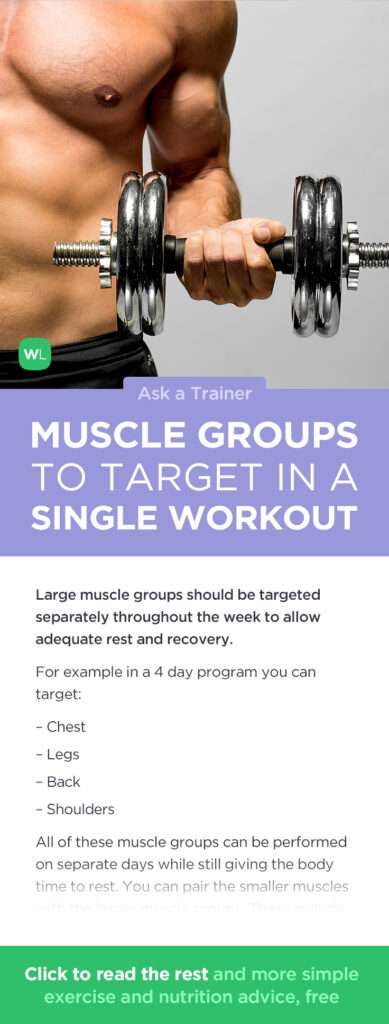
Full body workouts
Definition and benefits
Full body workouts involve targeting multiple muscle groups in a single session. Rather than focusing on specific muscle groups on particular days, full body workouts aim to work the entire body in each workout. The benefits of full body workouts include:
-
Efficiency: Full body workouts allow you to optimize your time at the gym by targeting multiple muscle groups in one session. This is especially beneficial for those with limited time or busy schedules.
-
Increased calorie burn: By engaging multiple muscle groups simultaneously, full body workouts result in higher calorie expenditure compared to isolated exercises.
-
Balanced muscle development: Full body workouts help ensure that all muscle groups are being worked consistently, promoting balanced muscle development and reducing the risk of muscle imbalances.
-
Improved cardiovascular fitness: Full body workouts often incorporate compound exercises, which also elevate your heart rate and stimulate cardiovascular fitness.
Sample full body workout routine
Here’s an example of a full body workout routine that targets multiple muscle groups:
- Squats: 3 sets of 10 reps
- Bench press: 3 sets of 10 reps
- Bent-over rows: 3 sets of 10 reps
- Shoulder press: 3 sets of 10 reps
- Lunges: 3 sets of 10 reps (per leg)
- Bicep curls: 3 sets of 10 reps
- Tricep dips: 3 sets of 10 reps
- Planks: 3 sets, hold for 30 seconds
Perform this routine two to three times a week, with at least one day of rest between sessions. Remember to start with weights that are challenging but manageable and gradually increase the intensity as you become stronger.
Split workouts
Definition and benefits
Split workouts involve dividing your training sessions into different muscle groups or body parts. Rather than targeting the entire body in one session, split workouts allow you to focus on specific muscle groups or areas each day. The benefits of split workouts include:
-
Targeted muscle group focus: Split workouts allow you to prioritize specific muscle groups and dedicate more time and intensity to their development.
-
Increased volume and intensity: By concentrating on fewer muscle groups per session, you can perform more exercises targeting those muscles, leading to a higher training volume and intensity.
-
Varied workout structure: Split workouts provide variety in your training routine, preventing boredom and allowing you to focus on different muscle groups on different days.
-
Flexible scheduling: Split workouts offer flexibility in scheduling, allowing you to customize your training frequency and prioritize the muscle groups you want to focus on.
Different split workout approaches
There are various split workout approaches to choose from, depending on your specific goals and preferences. Here are some common split workout approaches:
-
Push, pull, legs: This split divides your workouts into pushing exercises (chest, shoulders, triceps), pulling exercises (back, biceps), and leg exercises. It’s a popular split that allows each muscle group to be thoroughly targeted and maximizes recovery time.
-
Chest and triceps, back and biceps: This split separates your upper body workouts into chest and triceps on one day and back and biceps on another day.
-
Upper body and lower body: This split focuses on upper body exercises in one session and lower body exercises in another session. It provides a balanced approach to targeting both muscle groups.
-
Other muscle group splits: You can create split workouts based on specific muscle groups, such as shoulders and arms, chest and abs, or back and glutes.
Choose a split workout approach that aligns with your goals and preferences, and make sure to prioritize proper rest and recovery between sessions.
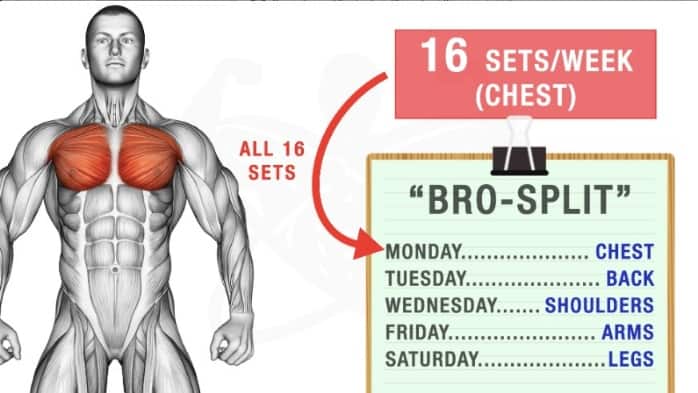
Training splits based on muscle groups
Push, pull, legs
The push, pull, legs split is a popular training split that divides your workouts into pushing exercises, pulling exercises, and leg exercises. This split allows for targeted muscle group focus while also providing adequate rest between workouts.
Push exercises: These include chest exercises (bench press, dumbbell flyes), shoulder exercises (shoulder press, lateral raises), and tricep exercises (tricep dips, tricep pushdowns).
Pull exercises: These involve back exercises (pull-ups, bent-over rows), bicep exercises (bicep curls, chin-ups), and rear deltoid exercises (reverse flies, cable face pulls).
Leg exercises: Leg exercises include squats, lunges, deadlifts, and leg press variations.
By dividing your workouts into these three categories, you can effectively target specific muscle groups while allowing adequate recovery time for each.
Chest and triceps, back and biceps
This split focuses on dividing your upper body workouts into chest and triceps on one day and back and biceps on another day.
For the chest and triceps day, you can include exercises like bench presses, dumbbell flyes, tricep dips, tricep pushdowns, and chest-focused cable exercises.
On the back and biceps day, incorporate exercises such as pull-ups, bent-over rows, bicep curls, chin-ups, and lat pulldowns.
By targeting these muscle groups separately, you can provide focused attention to each area while allowing for effective recovery.
Upper body and lower body
This split separates your workouts into upper body exercises on one day and lower body exercises on another day.
On the upper body day, include exercises such as bench presses, pull-ups, shoulder presses, bicep curls, tricep dips, and lateral raises.
On the lower body day, incorporate exercises like squats, lunges, deadlifts, glute bridges, calf raises, and hamstring curls.
By splitting your workouts in this manner, you can ensure proper focus and intensity on each muscle group without overexertion.
Other muscle group splits
You can create split workouts based on specific muscle groups or areas that you want to target. For example, you might choose to focus on shoulders and arms one day, chest and abs on another day, and back and glutes on another day.
Customize your split workouts based on your goals, preferences, and the muscle groups you want to prioritize.
Optimal number of muscle groups to target per workout
General guidelines and recommendations
The optimal number of muscle groups to target per workout depends on various factors, including training experience, fitness level, workout frequency, and duration. However, a general guideline is to target 2-4 muscle groups per workout session.
For beginners or those with limited time, it may be more effective to target 2-3 muscle groups per session. This allows for an adequate amount of exercises and sets for each muscle group without overwhelming the body.
Intermediate and advanced individuals may be able to handle targeting 3-4 muscle groups per session, with a higher training volume and intensity.
Individual variations and customizations
While general guidelines can be helpful, it’s important to consider individual variations and customize your workout routine based on your unique needs and goals. Pay attention to how your body responds to different training approaches and adjust accordingly.
Factors such as recovery ability, exercise selection, and personal preferences should also be taken into consideration when determining the optimal number of muscle groups to target per workout.
Remember, consistency and progression are key. Focus on gradually increasing the intensity and volume over time, regardless of the number of muscle groups targeted in each session.
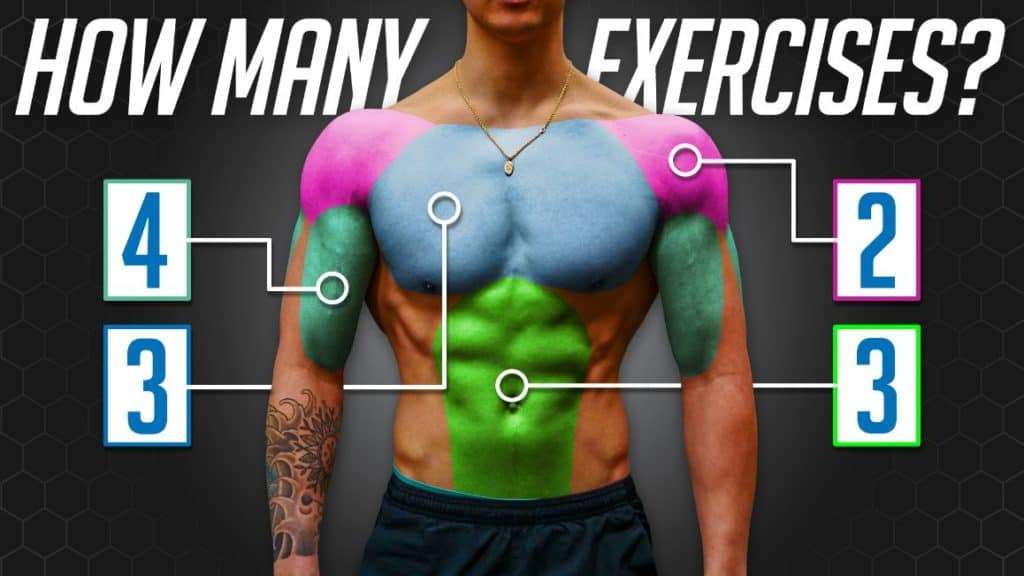
Monitoring progress and adjusting the workout routine
Tracking strength and muscle gains
To monitor your progress and make adjustments to your workout routine, it’s important to track your strength and muscle gains. Keep a record of the weights you lift, the number of reps and sets performed, and any noticeable improvements in your performance.
Regularly reassess your strength levels and adjust your training program accordingly. If you find that you’re consistently able to increase the weights or perform more reps, it may be time to increase the intensity or target additional muscle groups in your workouts.
Evaluating recovery and fatigue levels
Pay attention to your recovery and fatigue levels when determining if you’re targeting the optimal number of muscle groups in each workout. The body needs sufficient rest and recovery to repair and grow muscles.
If you consistently feel excessively sore, fatigued, or find that your performance is declining, it may be a sign that you’re overtraining or targeting too many muscle groups in each session. Scale back the number of muscle groups targeted or incorporate additional rest days into your routine.
Modifying the number of muscle groups targeted
As you progress with your training, you may need to modify the number of muscle groups targeted in your workouts. This can be done by either increasing or decreasing the number of muscle groups targeted.
If you’re experiencing plateaus or stagnation in progress, consider targeting additional muscle groups to provide a new stimulus and challenge to your body.
On the other hand, if you’re finding it difficult to recover or continually experience excessive fatigue, reducing the number of muscle groups targeted per workout can help optimize your recovery and overall performance.
Listen to your body, be aware of any signs of overtraining, and make adjustments to your workout routine as needed.
Importance of rest and recovery
Understanding muscle recovery
Rest and recovery are crucial components of any workout routine. It is during periods of rest that your muscles repair and adapt to the stress placed on them during exercise. Proper recovery allows for muscle growth, improved strength, and reduced risk of injury.
When you target multiple muscle groups in a workout, it’s important to allocate enough time for proper rest and recovery. This means ensuring you have enough rest days between sessions and getting adequate sleep each night.
Choosing appropriate rest days
The number of rest days needed will vary depending on your training intensity, volume, and individual recovery abilities. However, a general recommendation is to aim for at least one to two rest days per week.
On these rest days, focus on active recovery activities such as light stretching, gentle yoga, or low-intensity cardiovascular exercises. These activities promote blood flow, facilitate muscle recovery, and help prevent stiffness and soreness.
Incorporating active recovery
In addition to proper rest days, incorporating active recovery into your routine can further enhance your overall recovery process. Active recovery involves engaging in low-intensity activities that promote blood flow and aid in muscle recovery without causing additional stress on the body.
Examples of active recovery activities include walking, swimming, cycling at a leisurely pace, or engaging in gentle forms of yoga or Pilates. These activities help flush out metabolic waste and provide nutrients to muscles, promoting faster recovery and reducing muscle soreness.
Remember, rest and recovery are just as important as the actual workouts. Prioritize sufficient rest days and incorporate active recovery to optimize your muscular development and overall training progress.
In conclusion, targeting multiple muscle groups in a single workout offers various benefits, including efficiency in time management, increased calorie burn, improved overall strength, and balanced muscle development. Factors such as training experience, workout frequency, specific goals, and recovery ability should be considered when determining the optimal number of muscle groups to target. Compound exercises play a significant role in targeting multiple muscle groups simultaneously. Understanding the muscle groups and exercises associated with each group allows for effective and comprehensive training. Full body workouts and split workouts offer different approaches to targeting multiple muscle groups. Training splits based on muscle groups, such as push, pull, legs or chest and triceps, back and biceps, provide targeted muscle group focus. Monitoring progress, tracking strength and muscle gains, and evaluating recovery and fatigue levels allow for adjustments and modifications to the workout routine. Prioritizing rest and recovery, understanding muscle recovery, choosing appropriate rest days, and incorporating active recovery activities are essential for optimizing results and preventing overtraining. By incorporating these strategies, you can design an effective and well-rounded workout routine that targets multiple muscle groups and supports your fitness goals.
